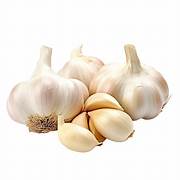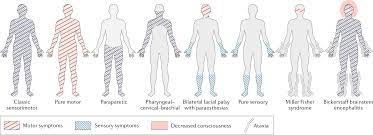Garlic (Allium sativum) offers numerous health benefits due to its rich content of sulfur compounds, antioxidants, and bioactive components. Below is a summary of its key health benefits and the best ways to use it to maximize those benefits.
Health Benefits of Garlic
- Boosts Immune Function:
- Garlic enhances immune response by stimulating immune cells like lymphocytes and macrophages. Its sulfur compounds, particularly allicin, have antibacterial, antiviral, and antifungal properties, which may help fight infections like colds.
- Studies suggest regular garlic consumption may reduce the frequency and severity of colds by up to 63% compared to a placebo.
- Supports Heart Health:
- Garlic can lower blood pressure by relaxing blood vessels, with studies showing reductions of 7-8% in hypertensive individuals.
- It reduces total and LDL (“bad”) cholesterol levels by 10-15% in some cases, potentially lowering the risk of heart disease.
- Garlic may also prevent platelet aggregation, reducing the risk of blood clots and stroke.
- Anti-Inflammatory and Antioxidant Effects:
- Compounds like diallyl disulfide and s-allyl cysteine in garlic reduce inflammation and oxidative stress, which are linked to chronic diseases like heart disease and cancer.
- Garlic’s antioxidants protect cells from damage caused by free radicals, potentially slowing aging and disease progression.
- Potential Cancer Prevention:
- Observational studies suggest garlic consumption is associated with a reduced risk of certain cancers, particularly colorectal and stomach cancer, due to its sulfur compounds inhibiting cancer cell growth.
- The World Health Organization notes that garlic may have protective effects against cancer, though more clinical trials are needed.
- Improves Digestive Health:
- Garlic has prebiotic effects, promoting the growth of beneficial gut bacteria, which supports digestion and overall gut health.
- Its antimicrobial properties may help combat harmful gut pathogens like H. pylori, linked to ulcers and gastric cancer.
- Blood Sugar Regulation:
- Preliminary research indicates garlic may improve insulin sensitivity and help regulate blood sugar levels, which could benefit individuals with diabetes or prediabetes.
- Antimicrobial Properties:
- Garlic’s allicin and other compounds can combat bacteria (e.g., E. coli, Salmonella), viruses (e.g., influenza), and fungi (e.g., Candida). It has been used traditionally to treat infections and wounds.
- Supports Bone Health:
- Some studies suggest garlic may increase estrogen levels in women, potentially reducing bone loss and supporting bone health in postmenopausal women.
Best Ways to Use Garlic for Maximum Benefits
To maximize garlic’s health benefits, the way it is prepared and consumed matters, as its active compounds (especially allicin) are sensitive to processing and cooking. Here are evidence-based recommendations:
- Consume Raw Garlic:
- Allicin, garlic’s primary bioactive compound, is released when a garlic clove is chopped, crushed, or chewed, but it degrades with heat. Raw garlic retains the highest levels of allicin and other sulfur compounds.
- Crush or mince 1-2 cloves of fresh garlic and let it sit for 10-15 minutes before consuming to allow allicin formation.
- Mix with honey, yogurt, or olive oil to reduce its pungency, or add to salads, salsas, or spreads like hummus.
- Swallow small pieces with water if the taste is too strong.
- 1-2 raw cloves daily (about 3-6 grams) is often recommended for general health benefits.
- Allicin, garlic’s primary bioactive compound, is released when a garlic clove is chopped, crushed, or chewed, but it degrades with heat. Raw garlic retains the highest levels of allicin and other sulfur compounds.
- Lightly Cooked Garlic:
- Cooking reduces allicin content but preserves other beneficial compounds like diallyl disulfide and s-allyl cysteine, which are more stable.
- Crush or chop garlic and let it sit for 10 minutes before lightly cooking (e.g., sautéing at low heat for a short time) to retain some benefits.
- Add to soups, stir-fries, or roasted vegetables near the end of cooking to minimize heat exposure.
- Overcooking (e.g., prolonged boiling or frying) destroys most active compounds, so avoid high heat for long periods.
- Cooking reduces allicin content but preserves other beneficial compounds like diallyl disulfide and s-allyl cysteine, which are more stable.
- Aged Garlic Extract (AGE):
- AGE is a supplement made from garlic aged for months, which stabilizes compounds like s-allyl cysteine and reduces garlic’s odor. It’s well-studied for heart health and immune support.
- Take as a standardized supplement (follow package instructions, typically 600-1200 mg daily). Consult a healthcare provider before starting supplements, especially if on medications.
- Garlic Oil or Infusions:
- Garlic-infused oils retain some sulfur compounds and are gentler on the stomach, though less potent than raw garlic.
- Use garlic-infused olive oil in dressings or drizzled over cooked dishes. Avoid homemade garlic oil stored at room temperature due to botulism risk—use commercially prepared versions or refrigerate homemade oil and use within a week.
- Fermented Garlic (Black Garlic):
- Fermentation enhances antioxidant content and creates milder flavors, making it easier to consume in larger amounts.
- Eat directly, add to dishes, or use as a spread. It’s available as a whole food or supplement.
- Consume garlic with meals to reduce stomach irritation, as raw garlic can cause discomfort in some people.
Precautions
- Allergies: Some people may be allergic to garlic, experiencing skin reactions or digestive issues.
- Medications: Garlic can interact with anticoagulants (e.g., warfarin), antiplatelet drugs, or diabetes medications, potentially increasing bleeding risk or lowering blood sugar excessively.
- Digestive Sensitivity: Raw garlic may cause heartburn or nausea in sensitive individuals. Start with small amounts.




